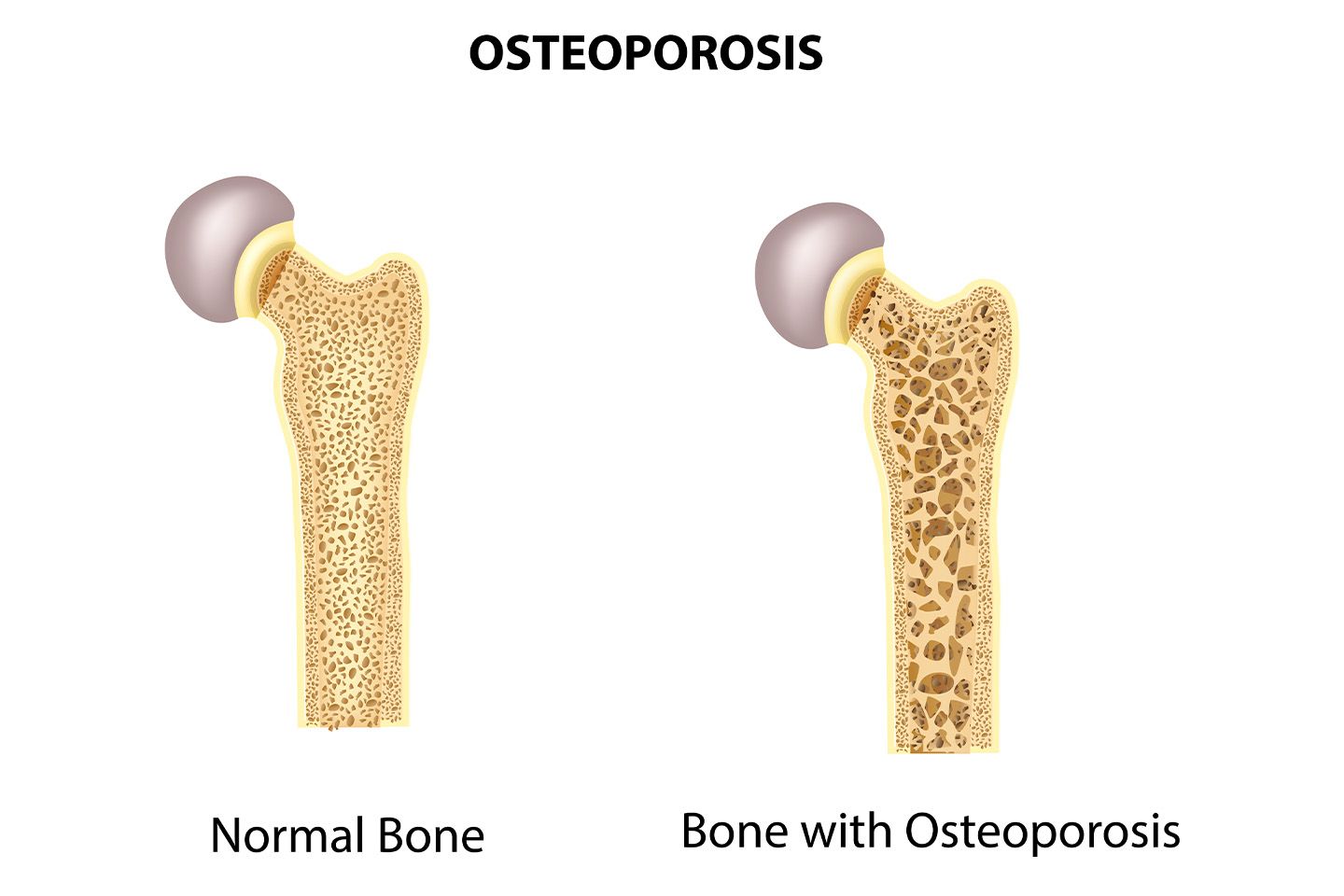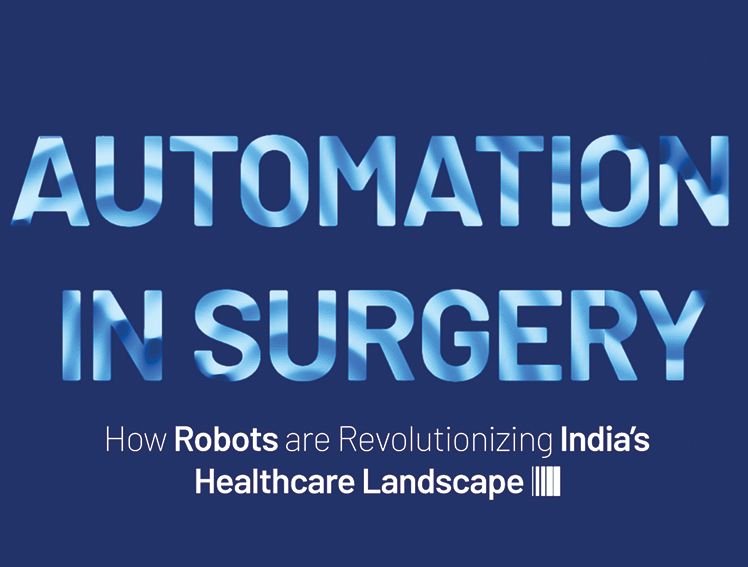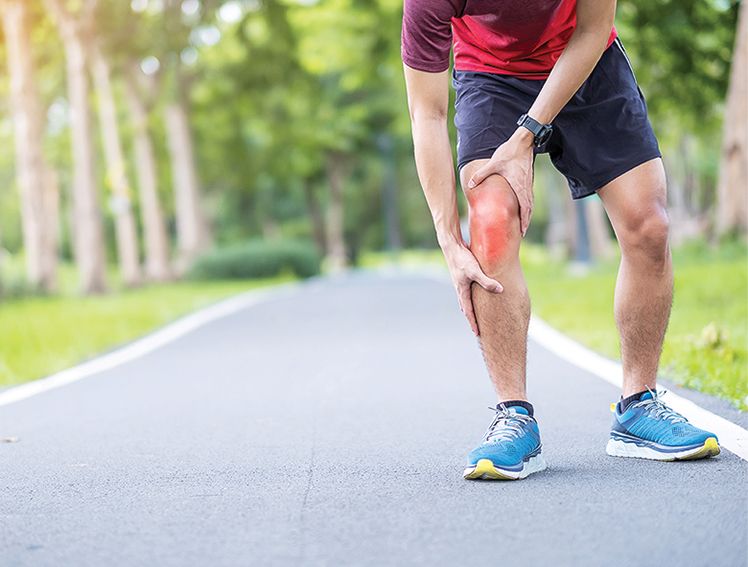
Instances of a fracture or bone breakage, even due to a minor fall or injury, indicate the possibility of your bones growing weak or thinning. This condition, where the bones become brittle and easily susceptible to breaking, is known as Osteoporosis. Osteoporosis is common in both genders, but studies show that women are more prone to the disease, reporting nearly 70-80% of all total traumas. Nearly 61 million people in India have Osteoporosis, of which 80% are women. Indians suffer this condition much earlier than their counterparts in the West.
In light of these statistics, discussing the factors, remedial measures, and treatment and spreading awareness among the masses becomes crucial. This helps prevent, overcome, and /or treat the pain and disabilities arising from this condition.
To understand the condition of Osteoporosis in detail, let us continue reading this blog.
What is Osteoporosis?
What is Osteoporosis?
''Osteo' means relating to bones, and 'porosis' means porous. Thus, Osteoporosis means porous bones. Our bone has a sponge-like matter inside it. This sponge has holes, which may become larger and more in number with time, making the bones weak. This causes the condition of Osteoporosis.
Bone is a living and growing tissue that breaks down and rebuilds itself. It is a storehouse of calcium and various minerals. Through bone remodeling, the old bone gets broken down by osteoclasts to make way for new bone growth by osteoblasts. This ongoing process provides calcium, phosphorus, and other minerals from the bone tissue to the bloodstream. Osteoclasts are cells responsible for breaking down the bone tissue, and osteoblasts are cells responsible for synthesizing the bone.
What causes Osteoporosis?
During young age, the body makes new bones faster than it breaks down the old bone tissues, resulting in increased bone mass. As one ages, the formation of new bones slows down compared to the breaking of the old bones tissues, thus reducing the bone mass. Osteoporosis is the result of either an increase in the resorption (destruction) of the bones or a decrease in the formation of new bones, resulting in a reduction in bone mass and density.
Osteoporosis Symptoms
Osteoporosis is considered a silent disease since it develops without showing symptoms or pain until your bones become so brittle and weak that they cause unexpected fractures. The condition catches you by surprise. However, one may notice a few signs of deteriorating bone health, and these are the warning signs not to be ignored. Osteoporosis symptoms include:
Lower back pain.
Negligible reduction in height.
Stooped posture.
Shortness of breath due to compressed disks in the spine.
Factors Contributing to Osteoporosis
Certain factors contribute to the development of Osteoporosis. Some of these factors are controllable, while some are not. The factors that may increase the likelihood of one developing this condition are-
Non-modifiable factors include –
Age – with age, there is a reduction in bone mass and density.
Sex – Women are more likely to develop Osteoporosis due to small body size and post-
menopausal high bone turnover due to lack of estrogens.
Family history- A history of Osteoporosis in one's family puts one at a higher chance of having it.
Race and ethnicity- White people and Asian Indians are more prone to the condition.
Modifiable factors include-
Dietary factors- The two major nutrients responsible for bone health are calcium and vitamin D. Calcium deficient diet and lack of exposure to the sun for synthesizing vitamin D increases the risk of Osteoporosis.
Bone Mineral Density (BMD)- BMD measures the amount of calcium and other minerals in the bone. Lack of appropriate BMD, especially in women, makes them susceptible to Osteoporosis. Decreased BMD may be attributed to poor diet, calcium, vitamin D, and other mineral deficiencies.
Lifestyle- A sedentary lifestyle, irregular diet, lack of exercise, physical activity, smoking, and alcohol consumption are some factors that contribute to developing this condition.
Medical reasons- Consistent and long-term use of certain medications, including steroids, raises the possibility of Osteoporosis. Medical conditions like liver or kidney disease, cancer, rheumatoid arthritis, or other comorbidities may trigger the condition's chances.
Hormonal levels- Too much or too little of some hormones are also responsible for the likelihood of weakening the bones, i.e., lowering of estrogen in women or testosterone levels in men, increase in thyroid hormone.
Prevention of Osteoporosis
Osteoporosis can be prevented with early bone health care and timely diagnosis and treatment. The condition has varied degrees of pain and discomfort, often resulting in disability and immobility if not taken care of. There are ways to prevent and control the weakening of the bones by taking simple yet effective measures. The non-surgical measures for osteoporosis treatment include-
Take care of Bone health: Bone health maintains sufficient bone mass and density. Healthy bones require healthy nourishment of nutrients.
Mind your calcium intake- The correct quantity of calcium intake is vital for healthy bones. The recommended calcium intake for women 50 and below and men 70 and below is 1000mg daily. For women above 50 years and men above 70, the recommended calcium intake is 1200 mg per day. Calcium is available in dairy products like milk, cheese, and yogurt. Leafy vegetables, soymilk, nut-based milk, bread, cereals, and juices also supply small amounts of calcium. Calcium supplements are also advisable in cases where daily food intake does not provide the required amount of calcium. However, one must be mindful of its intake, for excessive calcium intake may cause health issues like constipation, kidney stones, or heart valve calcification.
Vitamin D is equally essential- Vitamin D is available from exposure to sunlight, food, and food supplements. It is a fat-soluble vitamin. It helps in absorbing calcium and also provides support to the muscles. It is vital for developing strong bones. The skin reacts to the sunlight and makes vitamin D, which is stored in the form of fat in the body. Very few food items like cod liver oil, salmon, trout, and some fortified cereals and milk contain vitamin D. It is added to milk, juices, and dairy products to meet the daily requirement. Food supplements of vitamin D are required only when one does not get its required amount from sunlight and regular food intake.
Add protein to your diet- Protein helps improve bone mineral density. It is required for bone growth and is available from plants and animals. The ideal intake of protein is 0.4 gm per pound of body weight.
Exercise and Stay Active- An active life with physical activity and routine exercise helps keep your bones healthy. Weight-bearing and resistance exercises are recommended to maintain good health, muscle strength, and strong bones.
Positive lifestyle changes- Give up on a sedentary lifestyle, poor health habits like irregular meals, fast foods, self-prescribed supplements and medications, excessive fasting, smoking, and alcohol consumption. Healthy living is the key to a healthy life.
Treatment for Osteoporotic Hip Fracture
Osteoporosis causes fractures of the bones, but it is more common with hip bones, vertebrae, and wrist. Osteoporotic hip fractures are common and often caused by minor falls and injuries. They lead to disability and, in some cases, cause death if not timely or adequately treated.
The treatment for osteoporotic hip fracture includes medications, surgical repair, and rehabilitation to relieve pain and prevent blood clots and infection. Hip fractures are common among older people and need immediate medical intervention.
In some cases, osteoporotic hip fracture damages the femur bone entirely or partially. Total Hip Replacement is a surgical procedure to treat damaged hips with artificial implants. The goal of hip replacement is to relieve pain and discomfort and restore the functionality and mobility of the hip.
Meril's LATITUD FEMORAL HEAD
Meril, with its robust range of orthopedic portfolios, provides surgeons with unique orthopedic implant options that deliver successful, predictable, and reproducible results. LATITUD Hip System- Hip implants like LATITUD- The combination of design and the HA coating of the latitude hip system has been proven to work with over twenty-five clinical evidence.
MODULAR FEMORAL HEAD from Meril is manufactured from Cobalt-Chromium alloy (CoCr). It is intended to be used with an uncemented or cemented stem and articulate with a dedicated range of modular liner or bipolar monoblock shell. It is available in different sizes based on the outer diameter.
Conclusion
Osteoporosis symptoms are not known in its early stages unless one breaks the bone with a minor fall or injury. It is considered ‘silent’. Hence, maintaining healthy bones throughout life is vital to avoid bone mass and density reduction. This requires a nutrient-rich balanced diet that includes calcium, vitamin D, and proteins. Regular exercise and physical activity, abstinence from smoking, and other habits detrimental to health play an equally important role in maintaining bone health. Consult your healthcare professional immediately upon realizing any signs of Osteoporosis for timely treatment to prevent further deterioration of your bone health.
References
https://www.ncbi.nlm.nih.gov/pmc/articles/PMC8910053/
https://www.ncbi.nlm.nih.gov/pmc/articles/PMC4621228/#:~:text=Prevalence%20of%20osteoporosis%20ranging%20from,several%20studies%20(Table%201).
https://www.hopkinsmedicine.org/health/conditions-and-diseases/osteoporosis/what-you-can-do-now-to-prevent-osteoporosis
https://my.clevelandclinic.org/health/diseases/4443-osteoporosis



